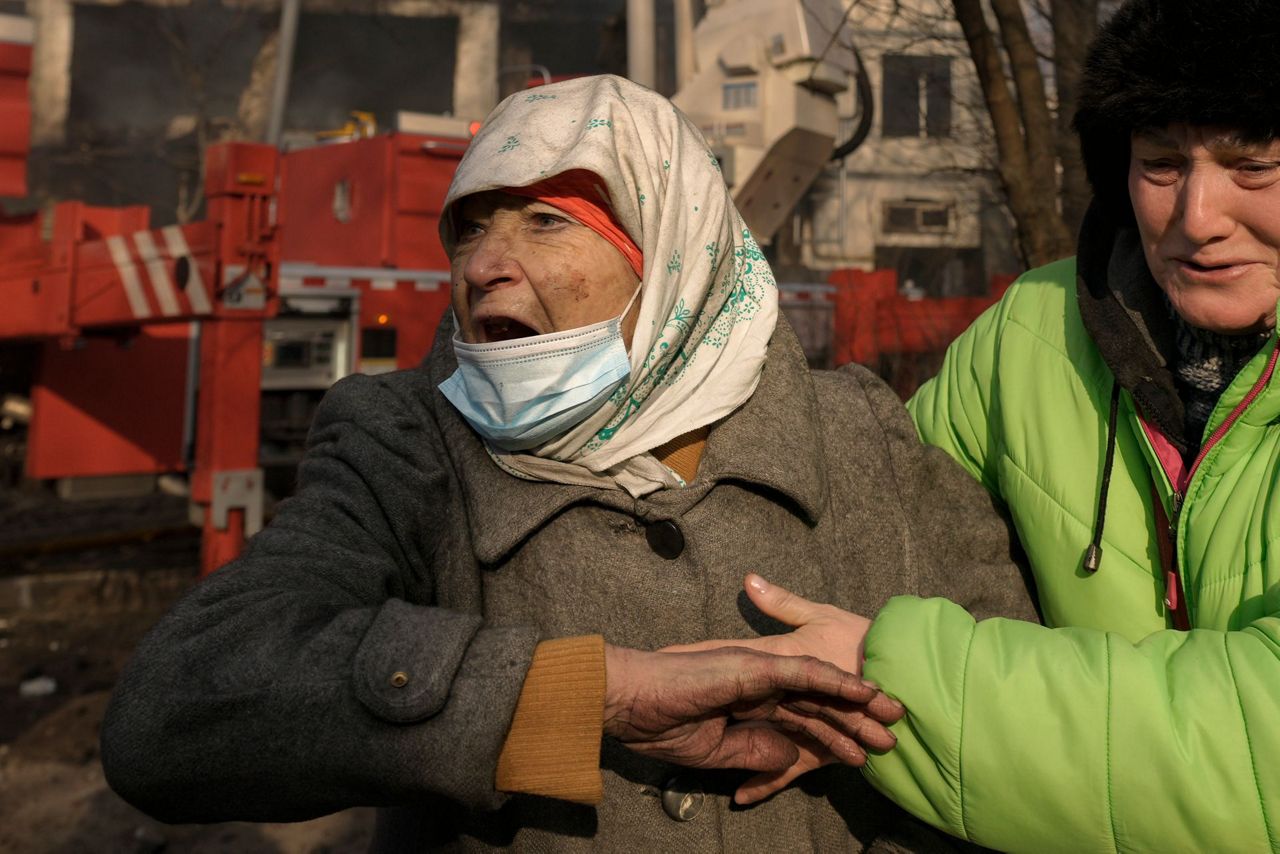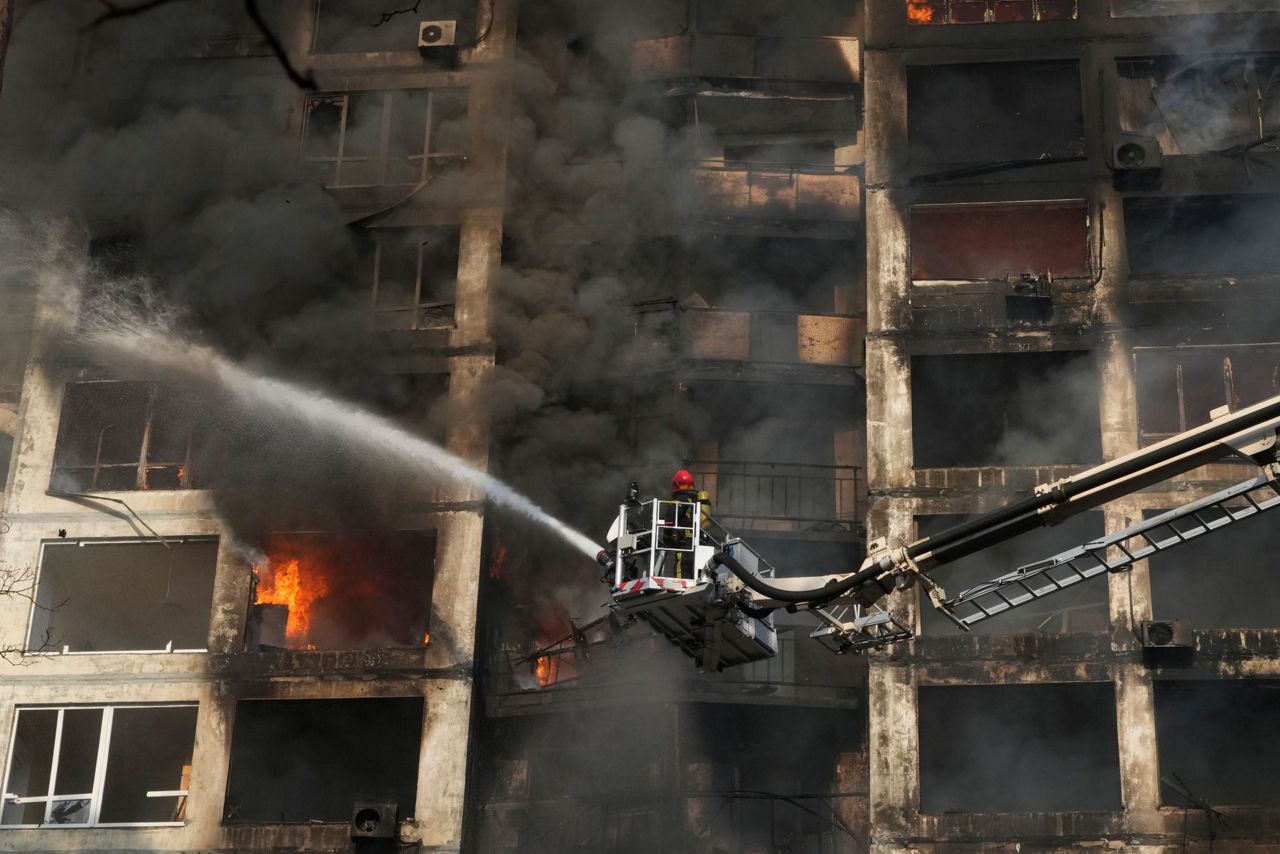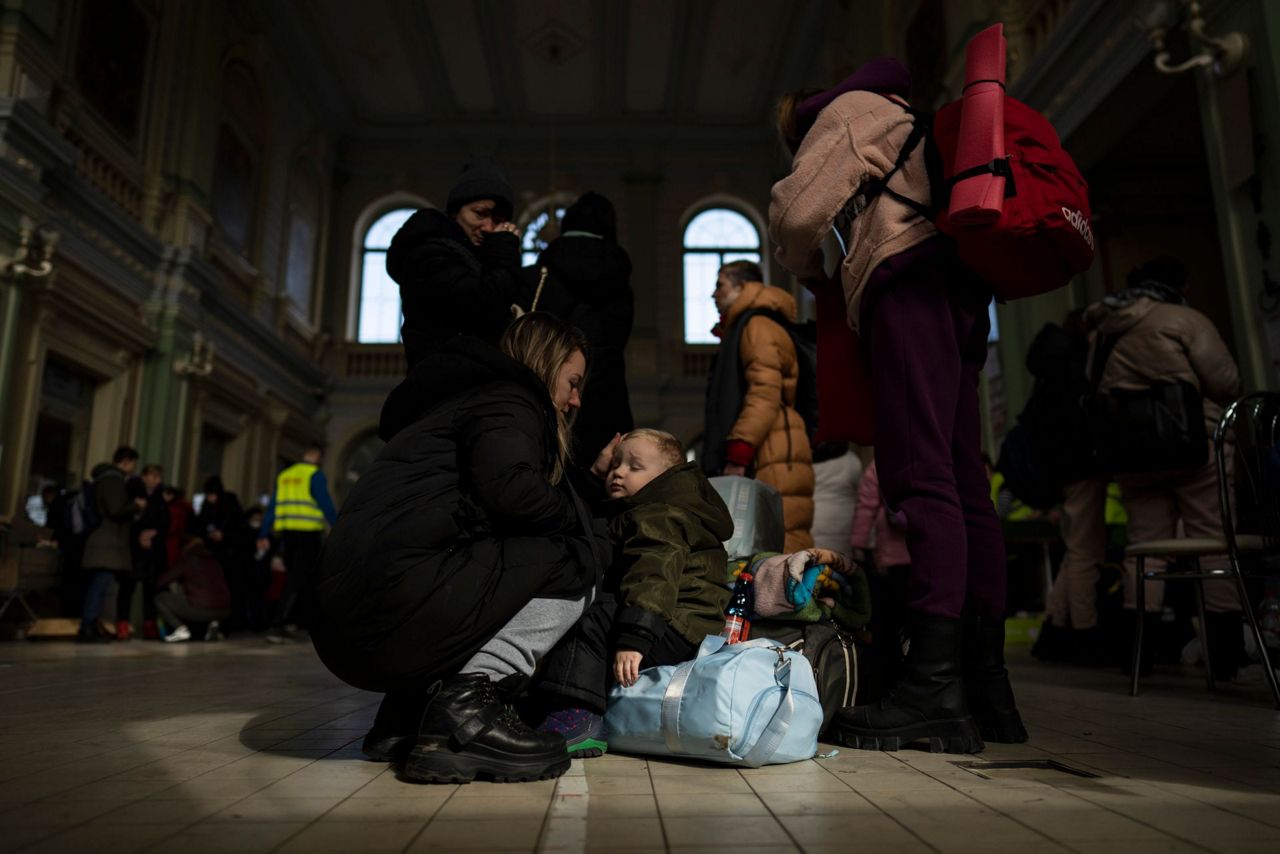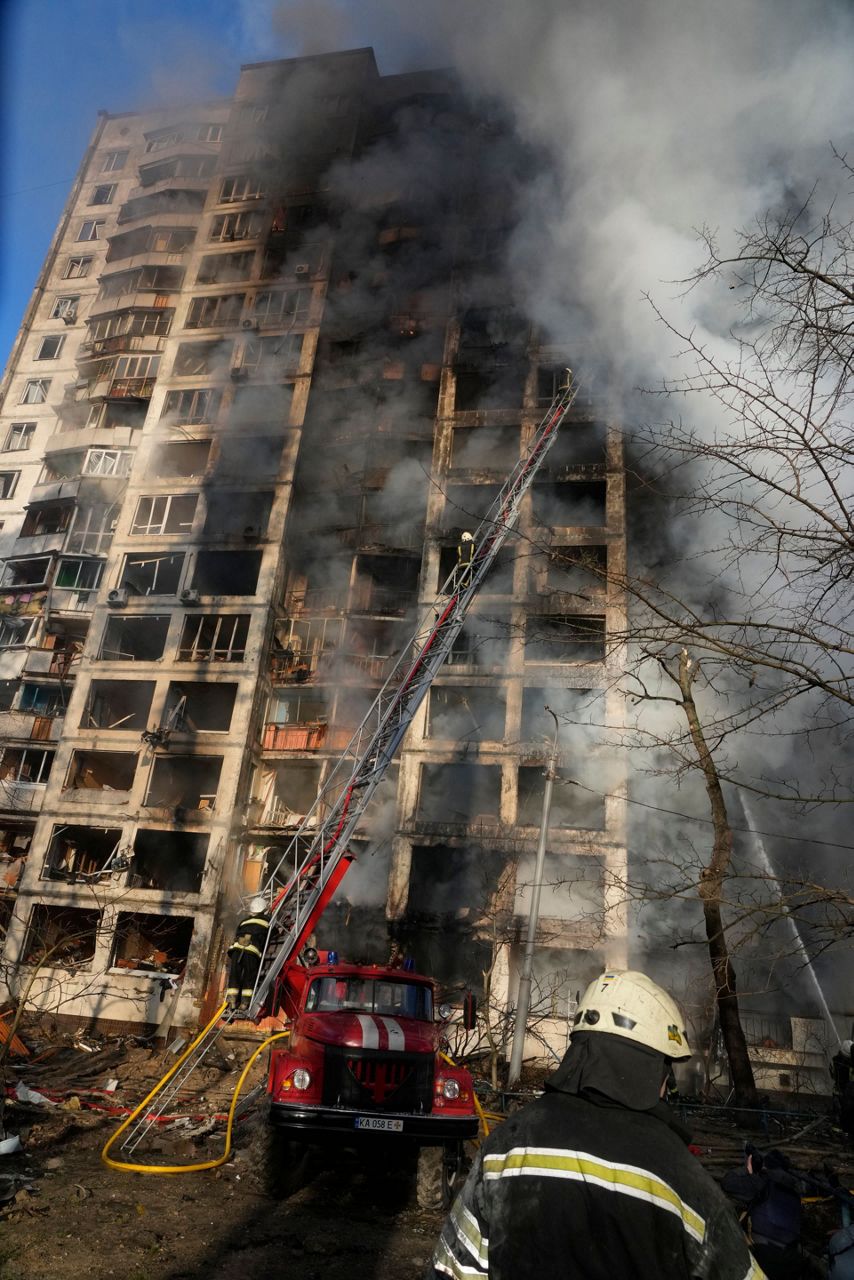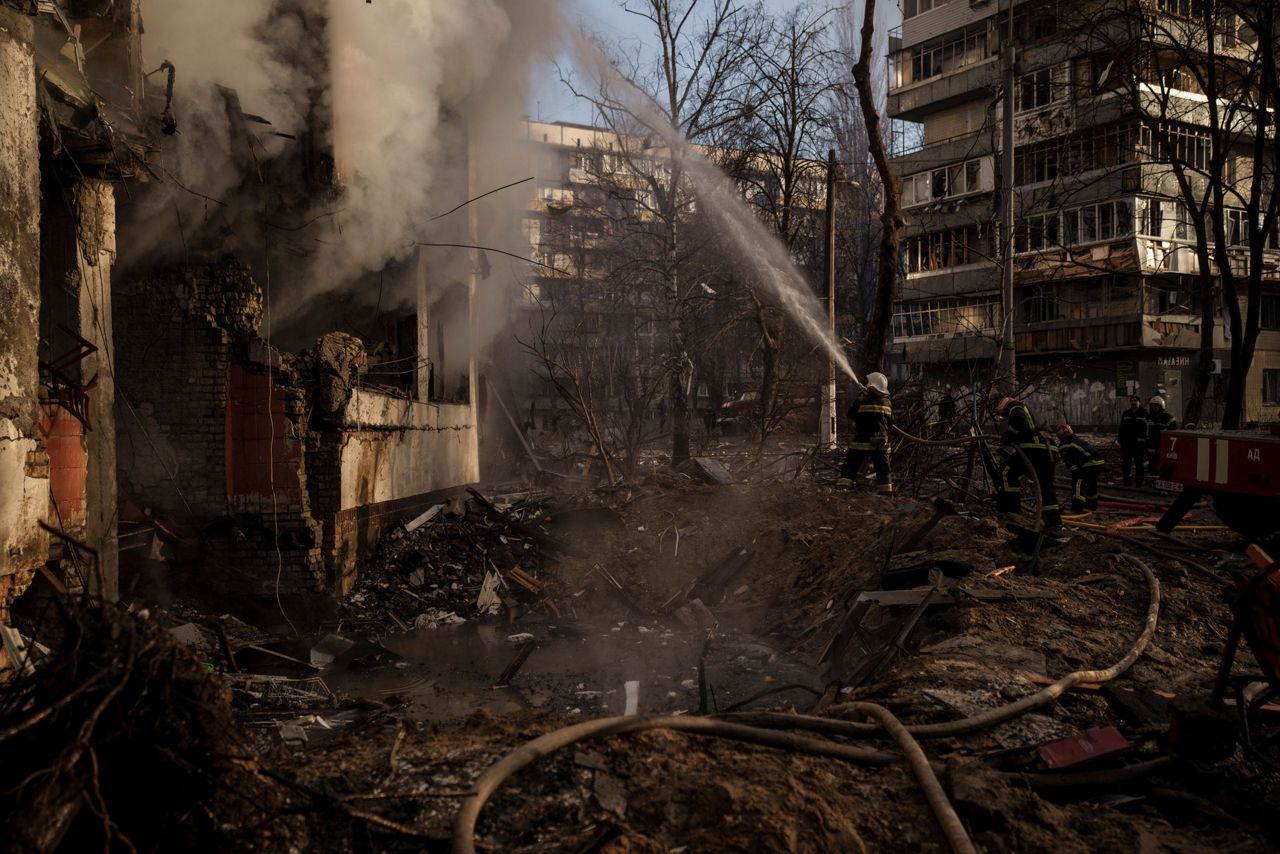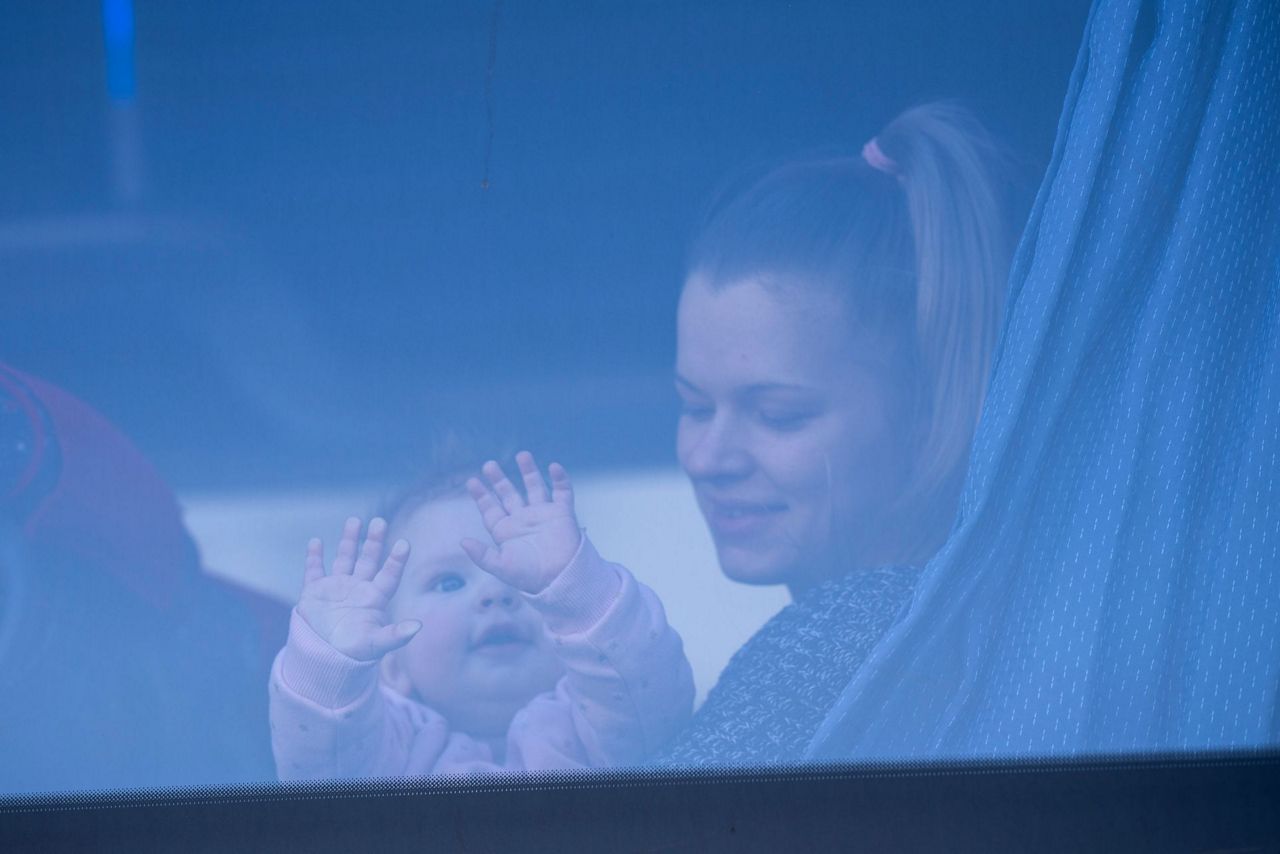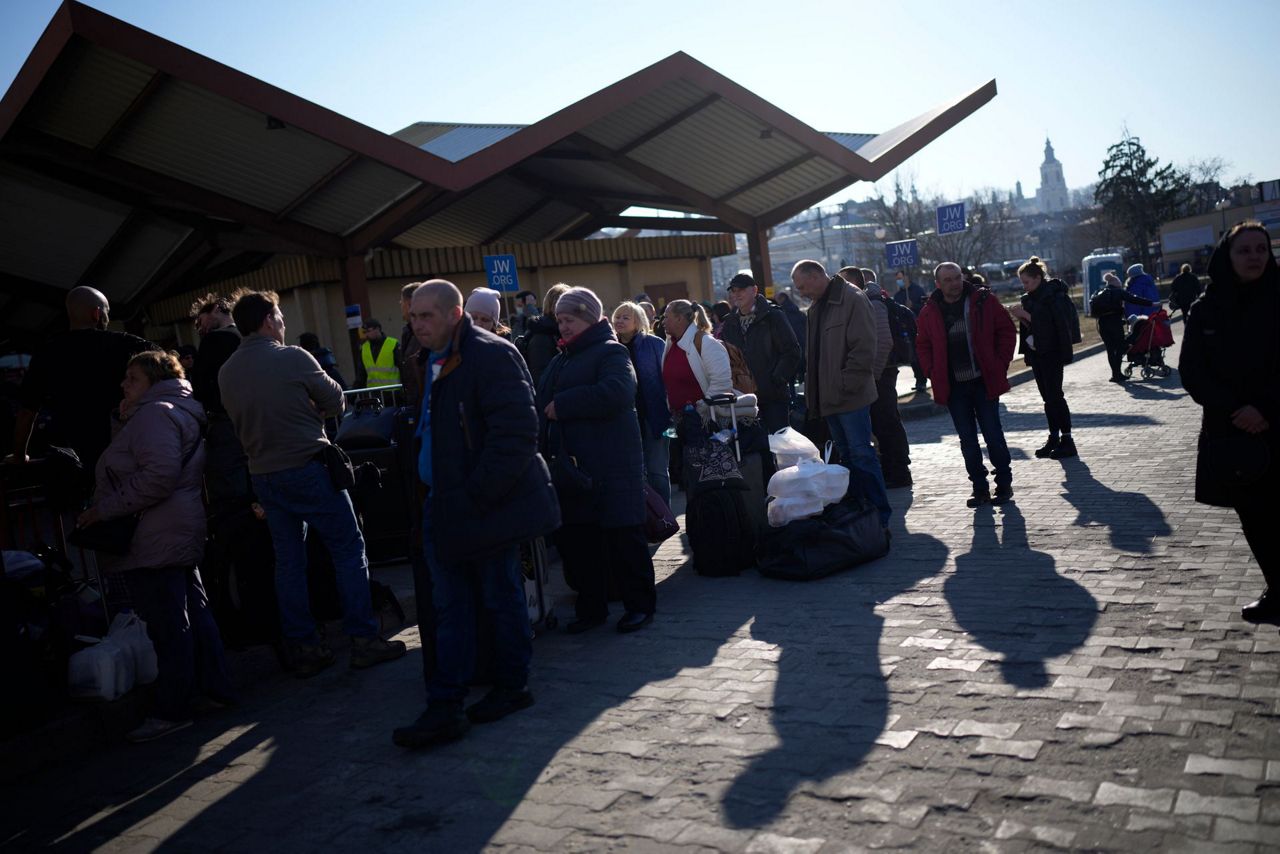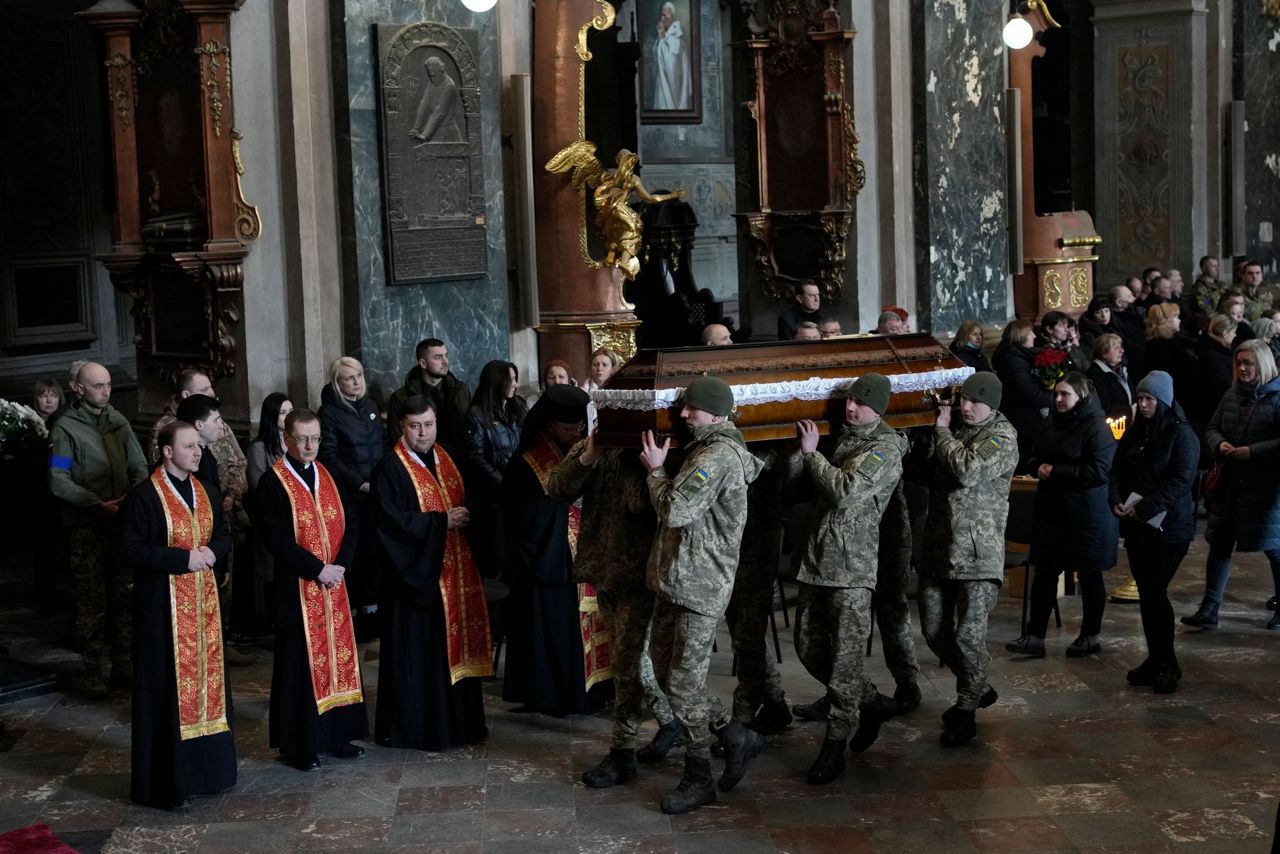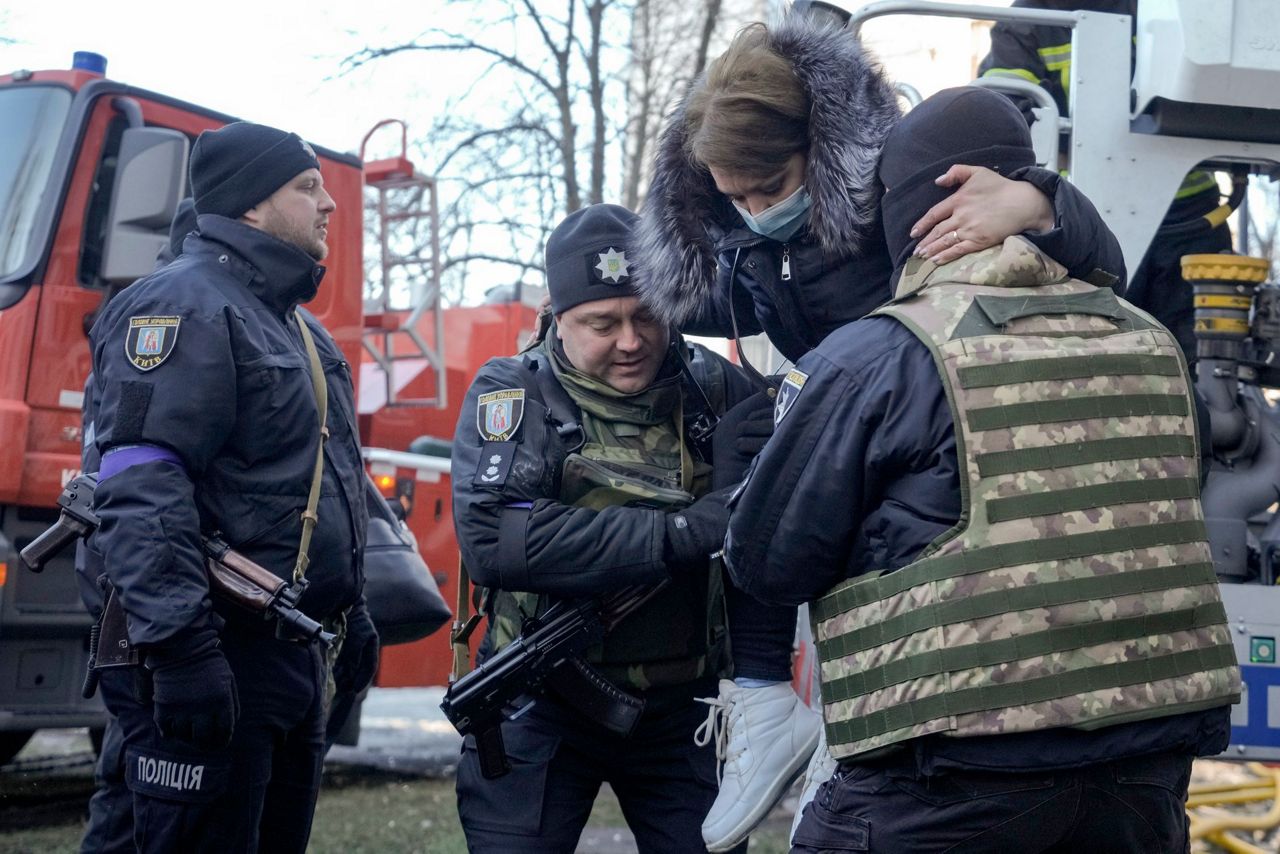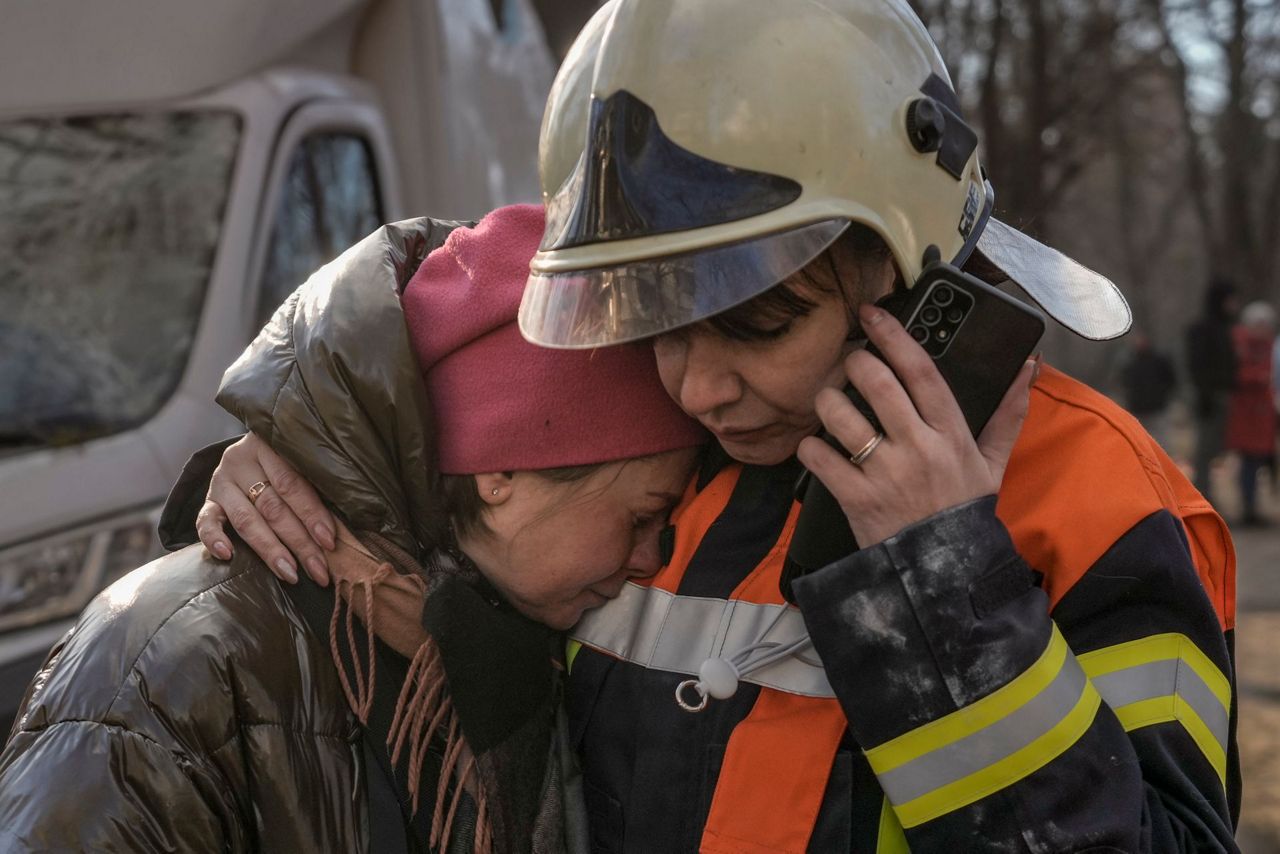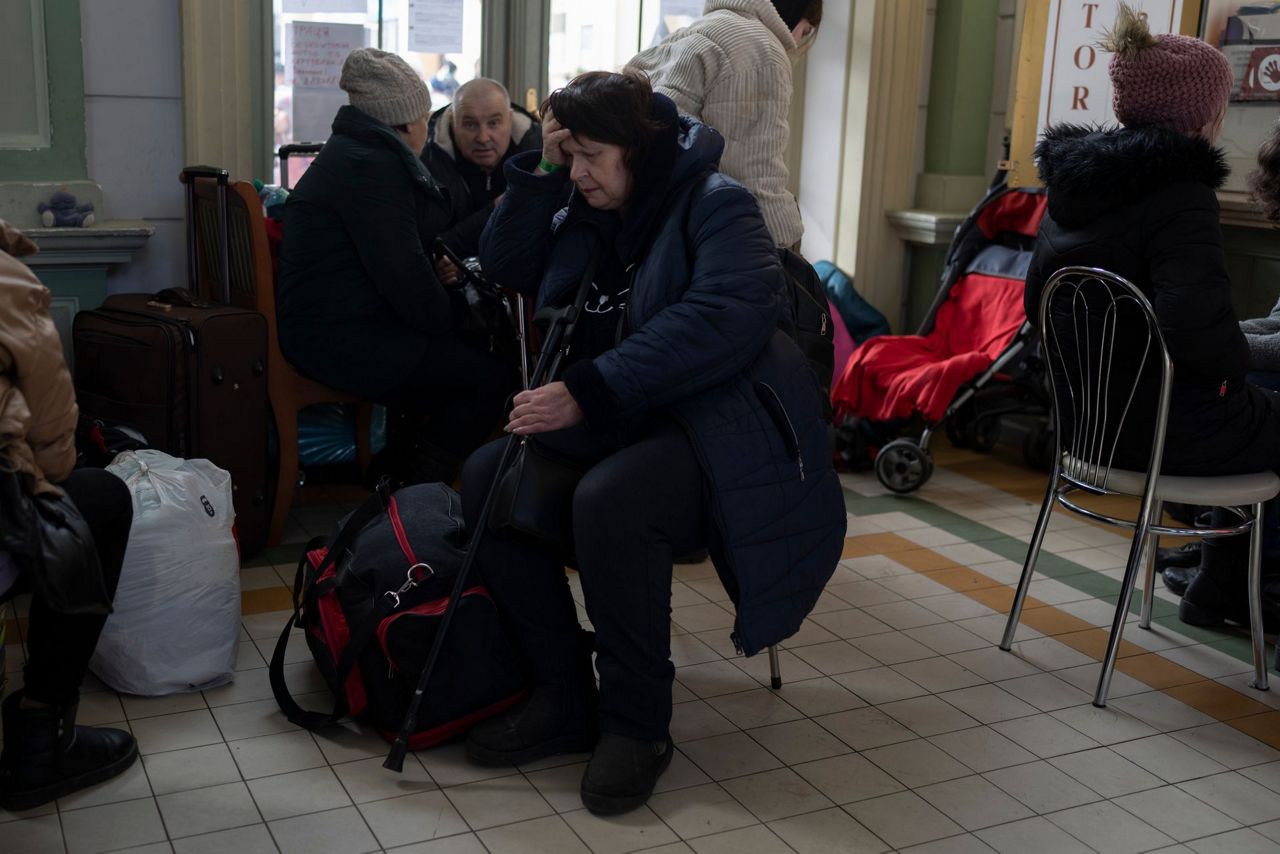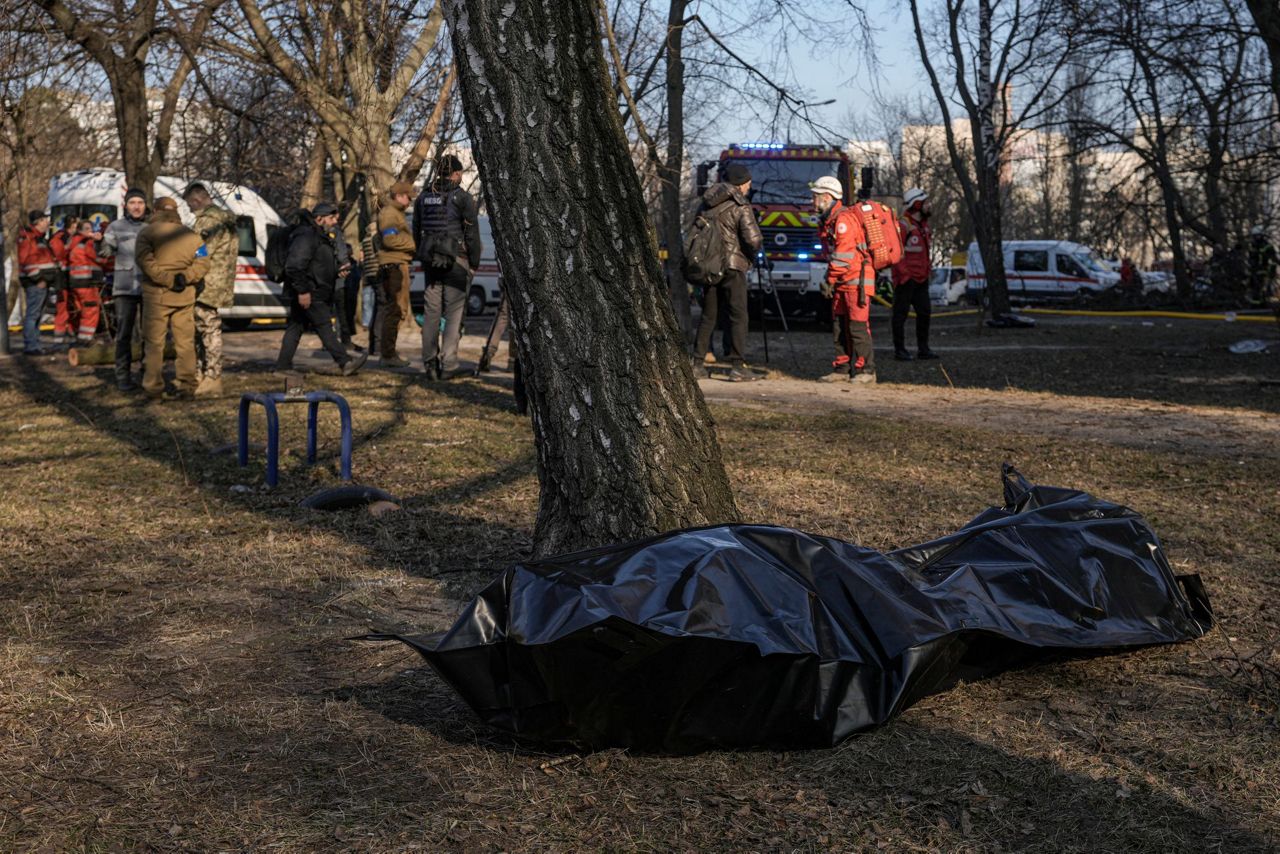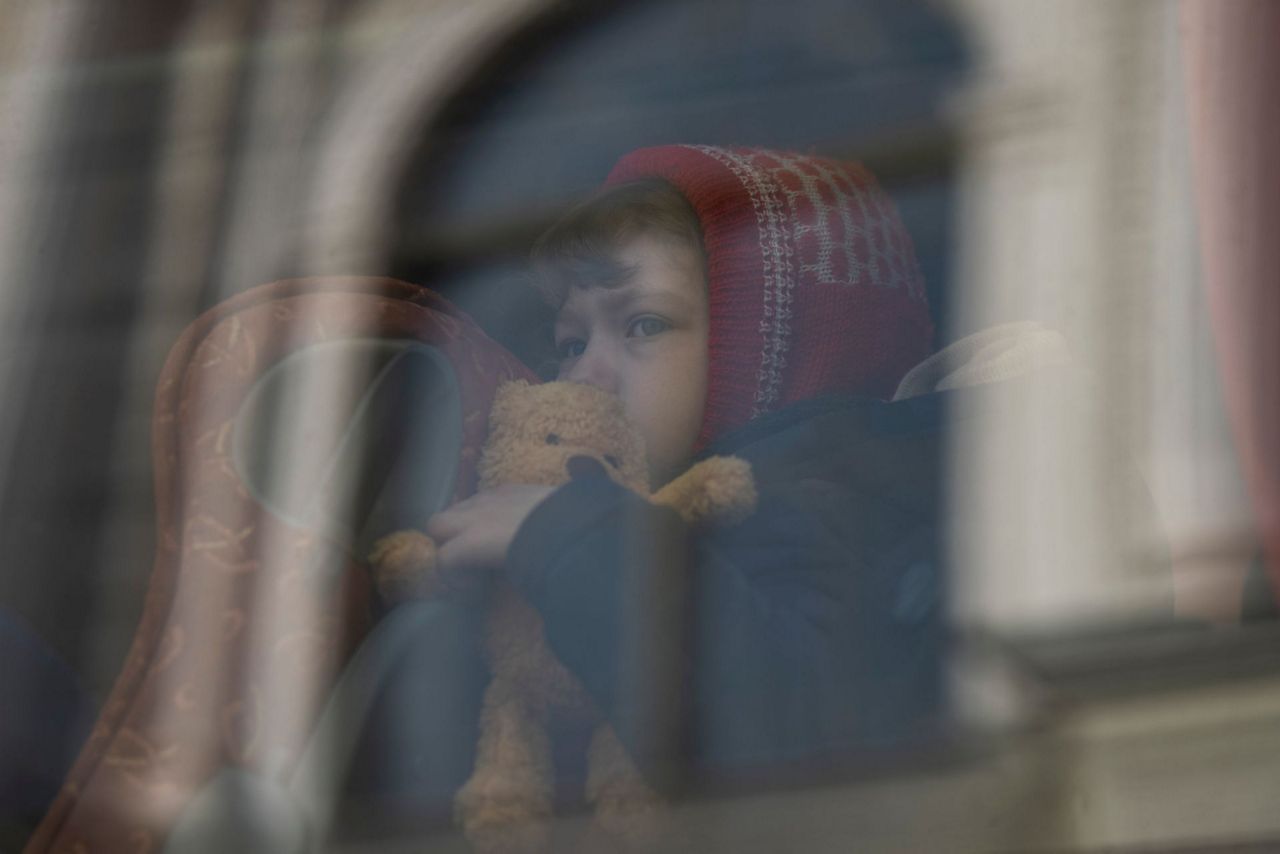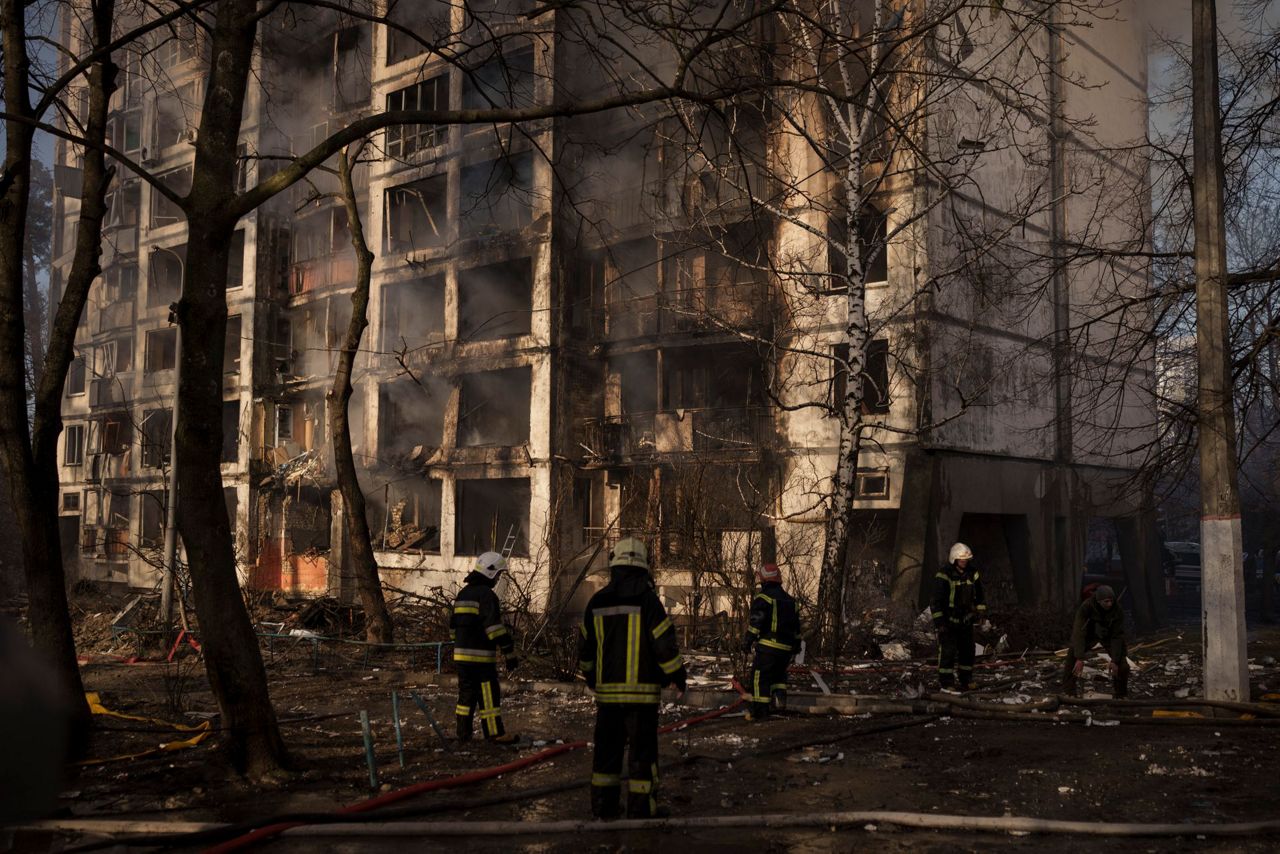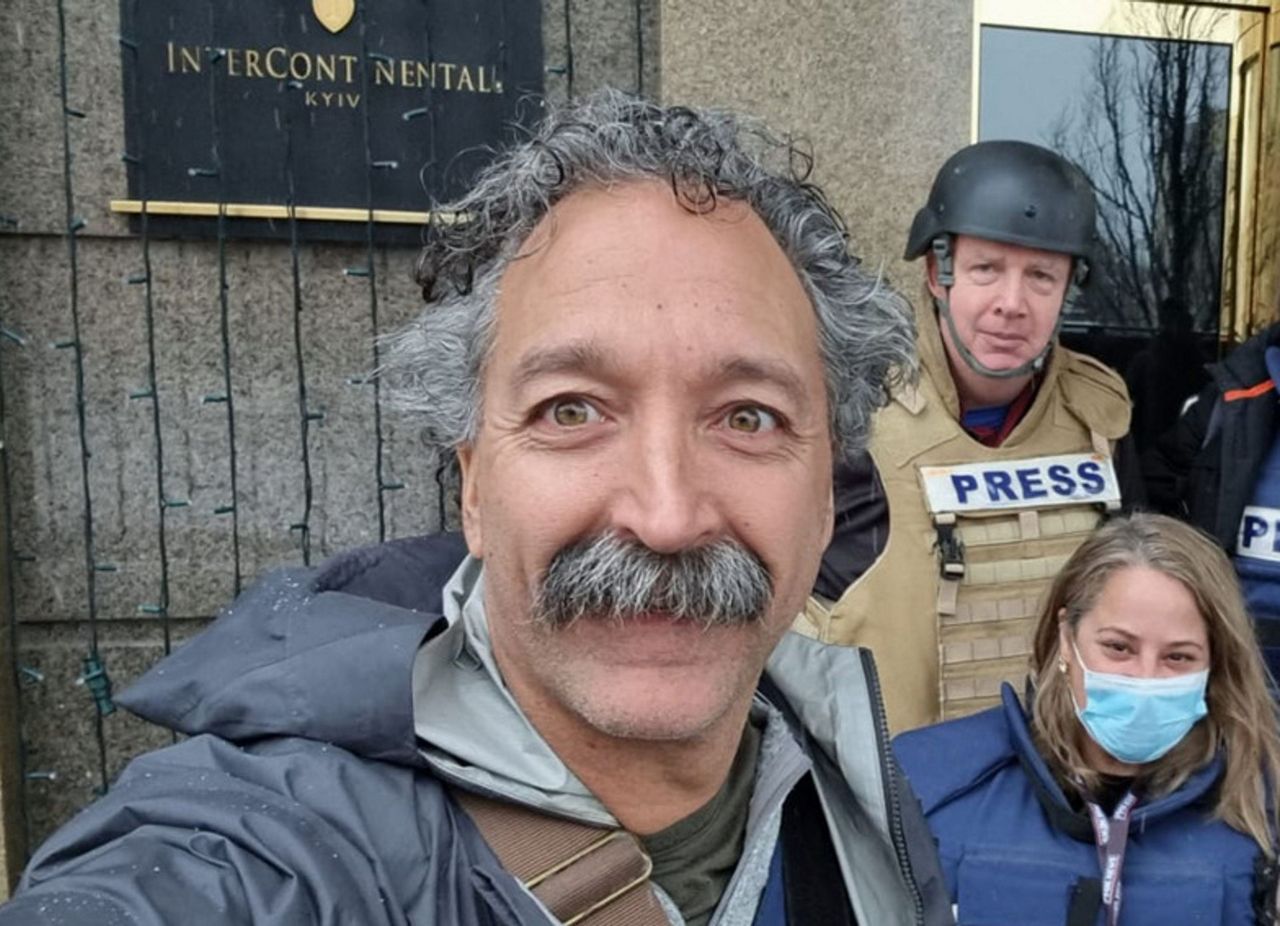Russian forces are pounding Ukrainian cities and edging closer to the capital, Kyiv, in a relentless bombardment that keeps deepening the humanitarian crisis in this war, now in its third week.
Still, a narrow diplomatic channel remains open, with more talks between the two sides taking place Tuesday. Russia is also circulating a proposed U.N. Security Council resolution proposing a cease fire to evacuate civilians, and to create safe passage for humanitarian aid.
From the besieged port city of Mariupol, a convoy of around 2,000 civilian vehicles left along the so-called humanitarian corridor on Tuesday, the city council said. Another 2,000 cars were waiting to leave.
Ukrainian President Volodymyr Zelenskyy asked Canadian lawmakers and Prime Minister Justin Trudeau to apply more economic and military pressure on Russia.
The war's human toll has been devastating — the number of Ukrainians forced to flee their country since the invasion started has now surpassed 3 million, the vast majority of them women and children. Thousands of soldiers and civilians are dead.
Fox News video journalist Pierre Zakrzewski, 55, was killed when the vehicle he was traveling in with another reporter was hit by gunfire on Monday near Kyiv, the network said Tuesday. The reporter, Benjamin Hall, was hospitalized.
Here are some key things to know about the conflict:
WHAT IS HAPPENING IN KYIV?
Fighting for Kyiv has intensified, with artillery fire echoing through the city. Russia launched a flurry of strikes that early Tuesday blew out windows and ignited a huge fire in a 15-story apartment building apartment in western Kyiv, spurring a frantic rescue effort.
Ukrainian President Volodymyr Zelenskyy said barrages also hit four multi-story buildings, killing dozens of people.
Explosions around the city caused significant structural damage, with shockwaves from a blast tearing through the entrance of a downtown subway station that has been used as a bomb shelter.
Kyiv mayor Vitali Klitschko announced a new curfew for the city Tuesday, saying it would run for 35 hours, through Thursday morning.
WHAT IS HAPPENING IN MARIUPOL, OTHER CITIES?
After days of relentless Russian shelling of encircled Mariupol, 2,000 civilian vehicles left the port city along a so-called humanitarian corridor — a route that runs west for more than 260 kilometers (160 miles) to the Ukraine-held city of Zaporizhzhia. City officials advised drivers to spend the night along the route unless they were close to Zaporizhzhia by evening.
Another 2,000 vehicles were ready to leave, the city council said.
Mariupol had a population of 430,000 before the war. The strategically located port city has been under fire for more than two weeks. Local officials estimate the siege has killed more than 2,300 people and said it had left residents desperate for food, water, heat and medicine.
Russian forces unleashed scores of new artillery strikes on downtown Kharkiv in the country’s east, hitting the city's historical center, including its main marketplace. Rescuers were pulling the bodies of dead civilians from destroyed apartment buildings.
Ukraine's parliament voted to extend martial law for another month, until April 24, meaning men between the ages of 18 and 60 are not allowed to leave the country in case they are needed to fight.
WHAT HAS THE AP DIRECTLY WITNESSED OR CONFIRMED?
Flames gutted an apartment building in the Svyatoshynskyi district of western Kyiv as emergency workers climbed ladders to rescue people.
Thick, dark smoke choked the air. A firefighter at the scene confirmed one person had died and that several have been rescued alive — but more remained trapped inside. A young woman sobbed outside the charred building, where shocked residents assessed the damage.
“People are dying, and the worst thing is that children are dying,” said Andriy, a firefighter at the scene who would only give his first name, before heading back into the burning building.
The war's burden has continued to fall heaviest on the most vulnerable. Over one million children have fled the country, and many more have been internally displaced.
A small but growing number of people are heading back to Ukraine to help, from foreign volunteers to Ukranian expatriate men and more recently women.
“I will go back and help. I am a health worker, so the hospitals need help,” said Iryna Orel, 50, lugging her luggage as she boarded a train from Przemysl, Poland, to Lviv in western Ukraine. “And I will stay until the end.”
WHAT IS THE STATUS OF DIPLOMACY IN THE RUSSIA-UKRAINE WAR?
Russia has circulated a proposed U.N. Security Council resolution demanding protection for civilians “in vulnerable situations” in Ukraine along with safe passage for humanitarian aid and people seeking to leave the country.
The draft resolution released Tuesday expresses “grave concern” for the deteriorating humanitarian situation and civilian casualties in and around Ukraine without mentioning Russia's responsibility for the war.
The resolution calls for a negotiated cease fire to evacuate all civilians. The draft could be put to a vote Wednesday, according to a Russian diplomate who was not authorized to speak publicly about the private discussions.
Ukranian President Volodymyr Zelenskyy asked the Canadian Parliament and Prime Minister Justin Trudeau to help enact a no-fly zone over Ukraine.
In an emotional speech via video, Zelenskyy asked Canadian leaders to imagine if bombs were landing on their communities and airports and their children were wondering what was happening.
“Please stop the bombing," Zelenskyy said. "How many more cruise missiles have to fall on our cities until you make this happen?
U.S. President Joe Biden is scheduled to travel to Brussels next week for talks with NATO and European leaders to discuss the Russian invasion of Ukraine, White House Press Secretary Jen Psaki said Tuesday.
Ukrainian negotiators were meeting with their Russian counterparts again on Tuesday after a brief pause.
Meanwhile, the leaders of Poland, the Czech Republic and Slovenia were traveling Tuesday by train to Kyiv on an EU mission of solidarity.
___ Associated Press Writer Edith Lederer contributed to this report.
WHAT ABOUT SANCTIONS AGAINST RUSSIA?
The U.S. added more sanctions Tuesday, whose targets include senior Russian military officials.
The U.S. also placed additional sanctions on the leader of Belarus — Alexander Lukashenko — for allowing Russian President Vladimir Putin to use his country as a staging ground for attacks on Ukraine. New sanctions also target Lukashenko's wife, Halina.
The European Union also added new sanctions to deny oligarchs luxuries such as pure-bred horses and truffles, and sanctioned 15 individuals, including the chief executive of Russia's state-run television station Channel One, which the EU says is used for propaganda purposes.
HOW IS THE SPORTS WORKD BEING AFFECTED BY RUSSIA'S WAR IN UKRAINE?
The European Union imposed san ctions Tuesday on Chelsea soccer club owner Roman Abramovich, adding him to an updated list of Russian oligarchs facing assets freeze and travel bans. Britain had already frozen Abramovich's assets and prevented Chelsea from selling new tickets or merchandise or signing new players.
The Court of Arbitration for Sport upheld a ban on Russian soccer teams from participating in European competition.
Russia is also asking CAS to review a similar ban by FIFA, which awarded Poland a bye in its scheduled March 24 World Cup qualifying match against Russia.
The Swiss swimming federation is threatening to boycott this year’s world championships in Budapest, Hungary in June and July if the sport's governing body allows Russian and Belarusian athletes to compete. FINA has said it opposes a ban and would allow them to compete without their national flags.
__
Follow the AP’s coverage of the war between Russia and Ukraine: http://apnews.com/hub/russia-ukraine
Copyright 2022 The Associated Press. All rights reserved. This material may not be published, broadcast, rewritten or redistributed without permission.



